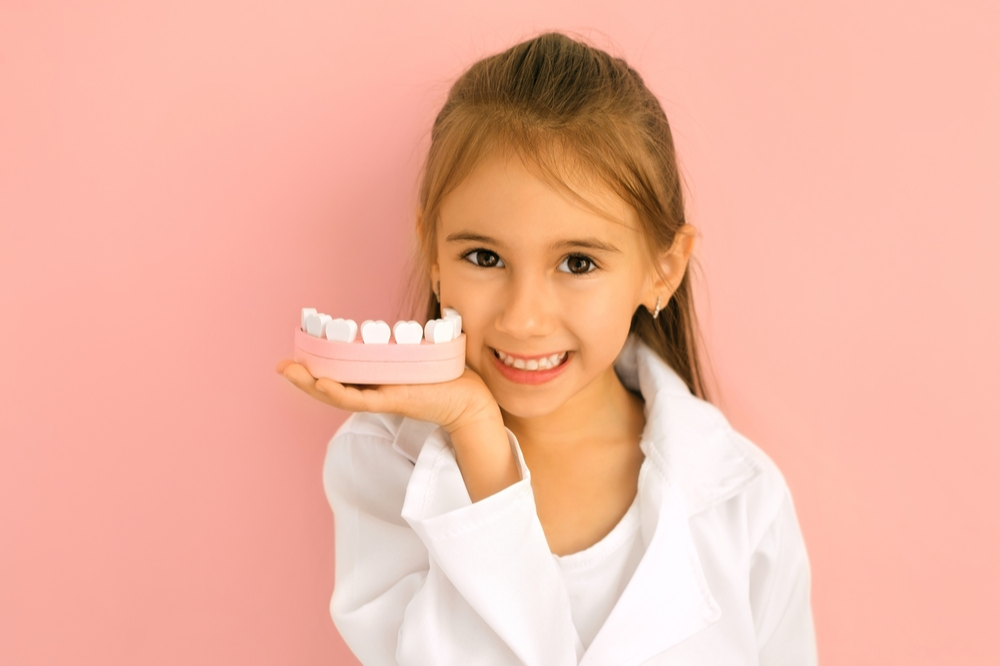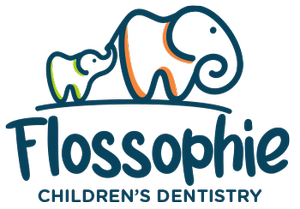
Ah, those first wobbly smiles! There’s nothing like watching your little one’s pearly whites peek through for the first time. But let’s face it, the journey to a complete adult smile can be filled with questions (and maybe a few tears from both you and your child!).
This blog from our expert pediatric dentist guides you through the fascinating world of children’s tooth development. We’ll explore everything from the arrival of those baby teeth to the exciting (and sometimes wiggly) transition to permanent teeth.
So, brace yourself, parents, and get ready to learn the ABCs of your child’s dazzling smile.
A is for Amazing Assembly Line: The Wonder of Baby Teeth
Did you know your child’s baby teeth, or primary teeth, start forming even before they’re born? These tiny treasures develop in the gums around the 6th week of pregnancy. When your little one reaches around 6 months old, the first tooth might erupt, bringing excitement (and maybe some drooling!).
Why are baby teeth important?
Don’t underestimate these little guys! They play a crucial role in:
- Speech Development: Baby teeth help your child form sounds correctly, allowing them to communicate effectively.
- Chewing and Nutrition: They enable your child to chew food properly, promoting healthy digestion and nutrient absorption.
- Jaw Development: Baby teeth act as placeholders, guiding the permanent teeth into their proper position in the jaw.
- Self-Esteem: A healthy smile can boost your child’s confidence and self-esteem.
B is for Brushing Basics: Establishing Good Oral Hygiene Habits
Even before those first teeth erupt, you can start laying the foundation for good oral hygiene. Here’s how:
- Gently wipe your baby’s gums with a clean, damp washcloth after feedings. This removes bacteria and keeps their mouth clean.
- Once teeth appear, brush twice daily with a soft-bristled infant toothbrush and water. As your child ages (around age 2), introduce a pea-sized amount of fluoride toothpaste.
- Lead by example. Brush your teeth with your child, making it a fun and interactive experience.
C is for Careful Considerations: Common Concerns and Teething Troubles
Teething can be a bumpy (literally!) ride for your little one. Here are some tips to soothe their discomfort:
- Teethers: Choose a cool, textured teether for your child to chew on.
- Gum massage: Gently massage your child’s gums with a clean finger.
- Cool washcloth: A cool, damp washcloth can be soothing on sore gums.
- Over-the-counter pain relievers: If the discomfort is severe, consult your pediatrician about safe pain relief options.
D is for Dental Drama: When to See a Dentist
Here are some signs it’s time for a visit to the dentist:
- Your child gets their first tooth, typically around 6 months old.
- You notice any white spots or discolouration on your child’s teeth.
- Your child experiences persistent pain or swelling in their mouth.
- Your child has difficulty chewing or eating.
When it comes to dental care for infants, start by gently cleaning their gums with a soft cloth. Once their teeth start coming in, transition to brushing with fluoride-free toothpaste.
Finding a Pediatric Dentist:
Pediatric dentists specialize in treating children’s teeth. They create a welcoming environment for your child and use kid-friendly language and techniques. At our kids’ dentistry, we prioritize preventive care and joyful experiences to foster lifelong oral health habits, ensuring bright smiles for the future.
E is for Eruption Escapades: The Wiggly World of Lost Teeth
Around age 6, the fun (and sometimes frightening) process of losing baby teeth begins! Don’t worry; this is completely normal. The permanent teeth are pushing through, causing the roots of the baby teeth to dissolve and the teeth to loosen.
Tips for Loose Teeth:
- Leave it alone: Don’t pull on a loose tooth; doing so can damage the developing permanent tooth beneath. Let it fall out naturally.
- Wiggle gently: If the tooth is very loose, your child can gently wiggle it to help it come out.
F is for Fun Facts: Fascinating Floss and Fluoride
-
Flossing:
Flossing becomes crucial once your child’s teeth touch. It removes food particles and plaque from between teeth, preventing cavities. Start flossing your child’s teeth when they have two teeth that touch.
-
Fluoride:
Fluoride strengthens tooth enamel and helps prevent cavities. Many water supplies contain fluoride, but your child’s dentist may recommend a supplement.
G is for Growing Up: The Arrival of Adult Teeth
The process of losing baby teeth and gaining permanent teeth usually continues until around age.
Smile Bright with Flossophie’s Tips
Flossophie Children’s Dentistry offers invaluable insights into children’s tooth development, guiding parents from baby teeth to adult smiles. Understanding the ABCs of tooth care ensures readiness to nurture healthy habits. Schedule an appointment with a pediatric dentist in Duluth today to kickstart your child’s journey to a lifetime of bright smiles.
